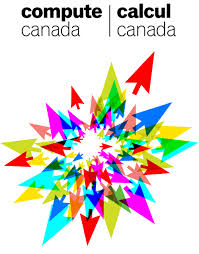With the introduction of high-throughput sequencing platforms, it is becoming feasible to consider sequencing approaches to address many research projects. However, knowing how to manage and interpret the large volume of sequence data resulting from such technologies is less clear. The CBW has developed a popular 2-day course covering the bioinformatics tools available for managing and interpreting high-throughput sequencing data, where the focus is on Illumina reads although the information is applicable to all sequencer reads.
Beginning with an understanding of the workflow involved to move from platform images to sequence generation, participants will gain practical experience and skills to be able to:
- Assess sequence quality
- Map sequence data onto a reference genome
- Perform de novo assembly tasks
- Quantify sequence data
- Integrate biological context with sequence information
This workshop is intended for graduate students, post-doctoral fellows, clinical fellows and investigators involved in analyzing data from high-throughput sequencing platforms.
UNIX familiarity is required.
You will also require your own laptop computer. Minimum requirements: 1024×768 screen resolution, 1.5GHz CPU, 2GB RAM, 10GB free disk space, recent versions of Windows, Mac OS X or Linux (Most computers purchased in the past 3-4 years likely meet these requirements). If you do not have access to your own computer, please contact support@bioinformatics.ca for other possible options.
This workshop requires participants to complete pre-workshop tasks and readings.
Module 1: Introduction to High Throughput Sequencing
- Overview of high-throughput sequencing technologies: major players and their strengths and weaknesses
Module 2: Genome visualization
- Data file formats used in genome visualization (FASTA, BED, WIG, GFF, etc)
- Introduction to genomic data visualization tools and how they can be used to visualize sequencing read data: UCSC, IGV, Savant, GBrowse
- Integrating other data sets into a browser
Lab Practical
- Variant detection and visualization within the genome using IGV
Module 3: Genome Alignment
- What is involved in mapping reads to a reference genome
- What are the FASTQ and SAM/BAM file formats
- Some common terminology used to describe alignments
Lab Practical
- Genome alignment exercise
Module 4: Small-Variant Calling and Annotation
- SNPs, SNVs, and short-INDELs and why to look for them
- BQ recalibration, duplicate removal, aligner choice
- Detecting variants and factors taken into account by the SNP callers
- Different types of SNP calling: haploid/diploid, trio, somatic mutations, pooled
- Determining which SNPS are good from the millions detected
- INDEL cleaning
- Standard file formats for SNPs
- Introduction to SNP calling tools and how they compare with each other
Lab Practical
- SNP detection exercise
Module 5: Structural Variation
- Structural variants (SVs), different types, mechanisms that give rise to SVs, and how SVs and CNVs differ
- Differences between human and model organism genomes
- Detecting SVs via sequencing (read pair, read depth, combined approach, local de novo assembly) and which SV types are detectable by which strategies
- Introduction to SV detection tools
- File formats used to describe SVs
Lab Practical
- SV discovery in a single human genome
- Brief intro to SV visualization and interpretation
Module 6: De Novo Assembly
- Fundamentals of de novo assembly
- Data structures used by assembles (de Bruijn graphs and overlap graphs)
- Common steps that assemblers perform
- Overview of commonly used software
Lab Practical
- Perform a de novo assembly task
Duration: 2 days
Start: Jul 09, 2020
End: Jul 10, 2020
Status: Registration Closed
Workshop Ended

Canadian Bioinformatics Workshops promotes open access. Past workshop content is available under a Creative Commons License.
Posted on:


